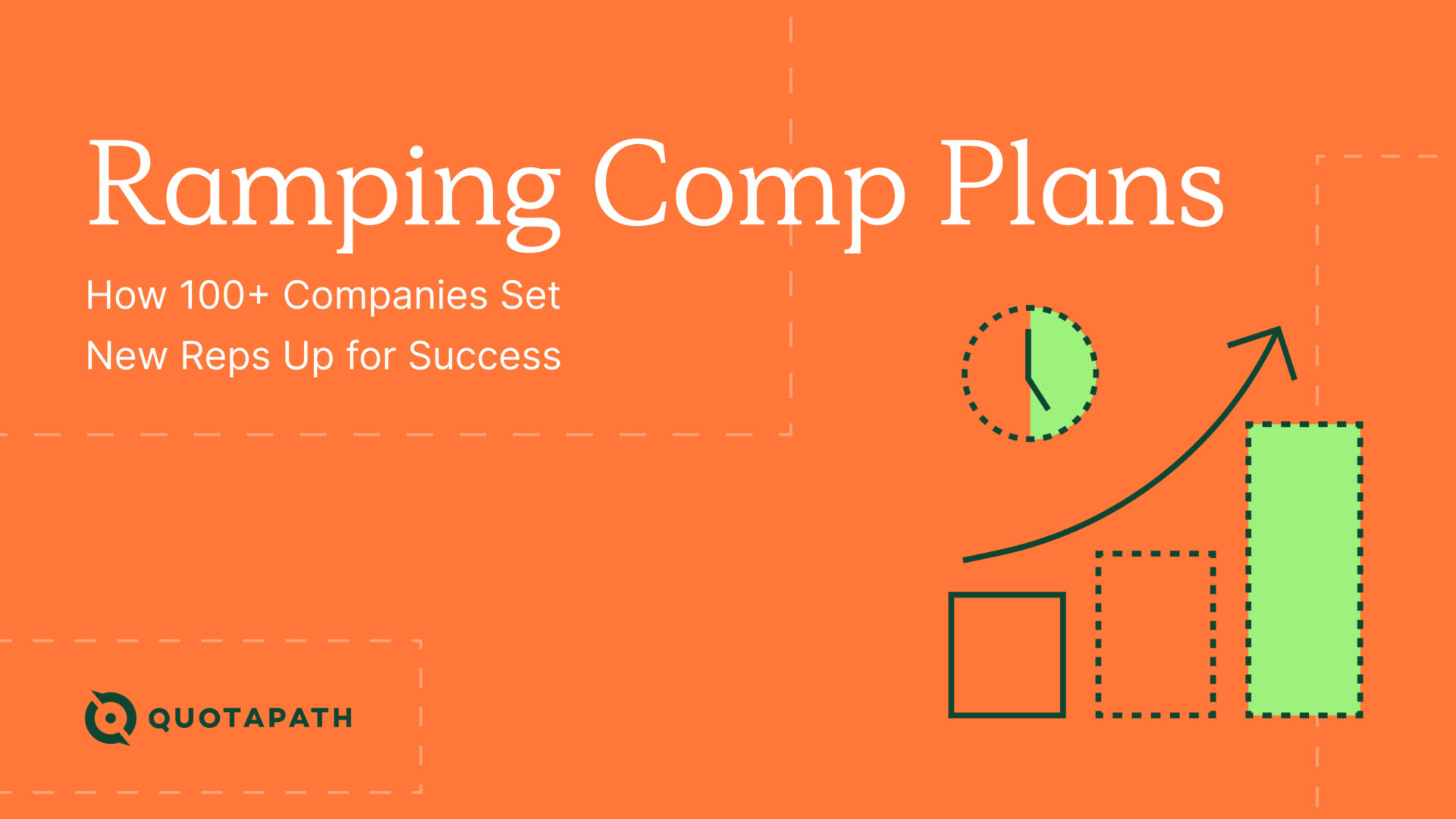This blog is our third in a four-part series featuring comp plan examples for account executives from industry leaders. In case you missed our previous posts, catch up on the first and second blogs featuring six sales experts.
Bad compensation plans leave scars.
“Compensation is part of the core foundation of trust between the company and the individuals,” said Philip Charm, Co-Founder of Climate Club.
Break that trust with a bad comp plan, and you face irrefutable damage in the form of rep exits.
“For many people like me who have tried to design comp plans early in a company’s life, we have scars from the experiences we’ve seen or when we’ve been taken advantage of,” Philip said.
That’s why it’s so important to start simple in your design, stay hyper-aware of changes in sales and customer cycles, and, most importantly, keep everyone on your team updated on their comp along the way.
How you introduce a comp plan and — any changes to it — plays a huge factor in how your reps will receive it.
The trust in the comp plan starts with its rollout.

Compensation Hub
Discover, compare, and build compensation plans. Customize compensation models using 9 variables.
Find Compensation PlansAfter the meeting, post a draft of plan changes on Slack and let people respond to it. Be active in the comments. Look out for good ideas, because your reps will have two to three good ones, and explain why you can’t run the bad ones.
“Your salespeople deserve to know why the design is the way it is and why changes they propose can’t be done,” Mark added.
By the time you roll it out then, there shouldn’t be any surprises.
In addition to the rollout, Mark, Philip, and Demandbase VP of Go-To-Market Asher Mathew offered some additional sales compensation best practices. Read on for tips and three commission pay examples.
How to fix your comp plan
Mark: Design begins at the C-suite.
Start your design at the C-level and with your board. Identify three to five strategic objectives for the company over the next quarter or year.
“Then ask, can any of those priorities be reinforced with sales compensation design?” Mark said.
Sometimes you can’t.
“But sometimes you can,” Mark said. “And if you can, you do it. In my experience, that’s the No. 1 tactical implementation that will drive the strategic objective. Much more than the CEO saying this is what we’re trying to do.”
Philip: Hold off on variable pay when you’re just getting started.
Philip’s tip for teams hiring their first sales rep is to not offer variable pay just yet. Instead, make it clear they’re getting a solid base salary and equity in the company.
“To me, this is a best practice,” Philip said. “It’s the best way to balance upside and downside risk.”
In setting it up this way, you’re incentivizing your rep, as an owner of the company via larger equity than a traditional sales rep, and capturing the value of that growth.
If you go this route, know that this hire is a tough hire to find.
“This hire tends to not be from an enterprise selling background. Rather, they’re more a true business development professional,” Philip added.
Asher: Don’t pull too many levers.
“What doesn’t work in comp plans is when you use a plan to brute-force a go-to-market motion,” Asher said.
Think about the well-being of your sales force. High-commission plans filled with incentives, spiffs, and accelerators can overcrowd a plan and backfire.
“Your reps may run really fast for a bit, but when you burn them, you churn them,” Asher said.
He also mentioned the importance of understanding your risk profile when evaluating base to variable pay splits. The closer and more control a rep has over the conversation with the customer, the more risk they can take on in their plan. AKA: higher commission ratio.

“The accelerate and decelerate plan is one of the best generic models,” Mark said. “It makes the performance payout extreme.”
When a rep doesn’t do well, they really don’t do very well.
“But when you do well, you do really well,” Mark added. “It accentuates the motivation of a commission plan.”
View Mark’s Plan: Commission with Accelerators & Decelerators
Philip’s early-stage enterprise AEs plan
For enterprise reps, Philip recommends offering an OTE of no less than $225K. As far as other elements of the compensation structure, Philip said he loves the idea of an accelerator.
However, when you’re building an enterprise team from scratch and don’t have historical data on past performance, a Single Rate Commission plan with a flat 10% on every deal works well.
This plan pays your reps competitively since they’re bringing in larger deals and gives your team time to understand the cost of sales, expectations, and payback periods.
View Philip’s Plan: Single Rate Commission
Asher’s commission-only plan
Above, Asher mentioned the need to recognize your business’s risk factor as it pertains to compensation. The riskiest of compensation plans for the rep is the commission-only plan. But for the business, that’s the least risky.
“One-hundred percent commissions is the fastest way to learn sales,” Asher said. “You get a ton of exposure and education quickly.”
In his plan, he adds accelerators that raise the base rate from 10% to 15% after the rep achieves 100% attainment.
View Asher’s Plan: Commission Only with Accelerators
About Compensation Hub
Our newest (free) resource, Compensation Hub, invites Sales, RevOps, and Finance leaders to discover, compare, customize, and share compensation models. Strike the right balance between pay and performance to align your sales compensation to your business strategy.
About QuotaPath
QuotaPath provides a sales compensation and commission tracking platform for GTM teams of all sizes. Pairing a fun-to-run user experience with a highly technical backend, QuotaPath is the only solution fit to get Sales, RevOps, and Finance on the same page for compensation.
Check out our integrations page to see how we fit into your tech stack. And, to learn more, book a time with a member of our team today.



